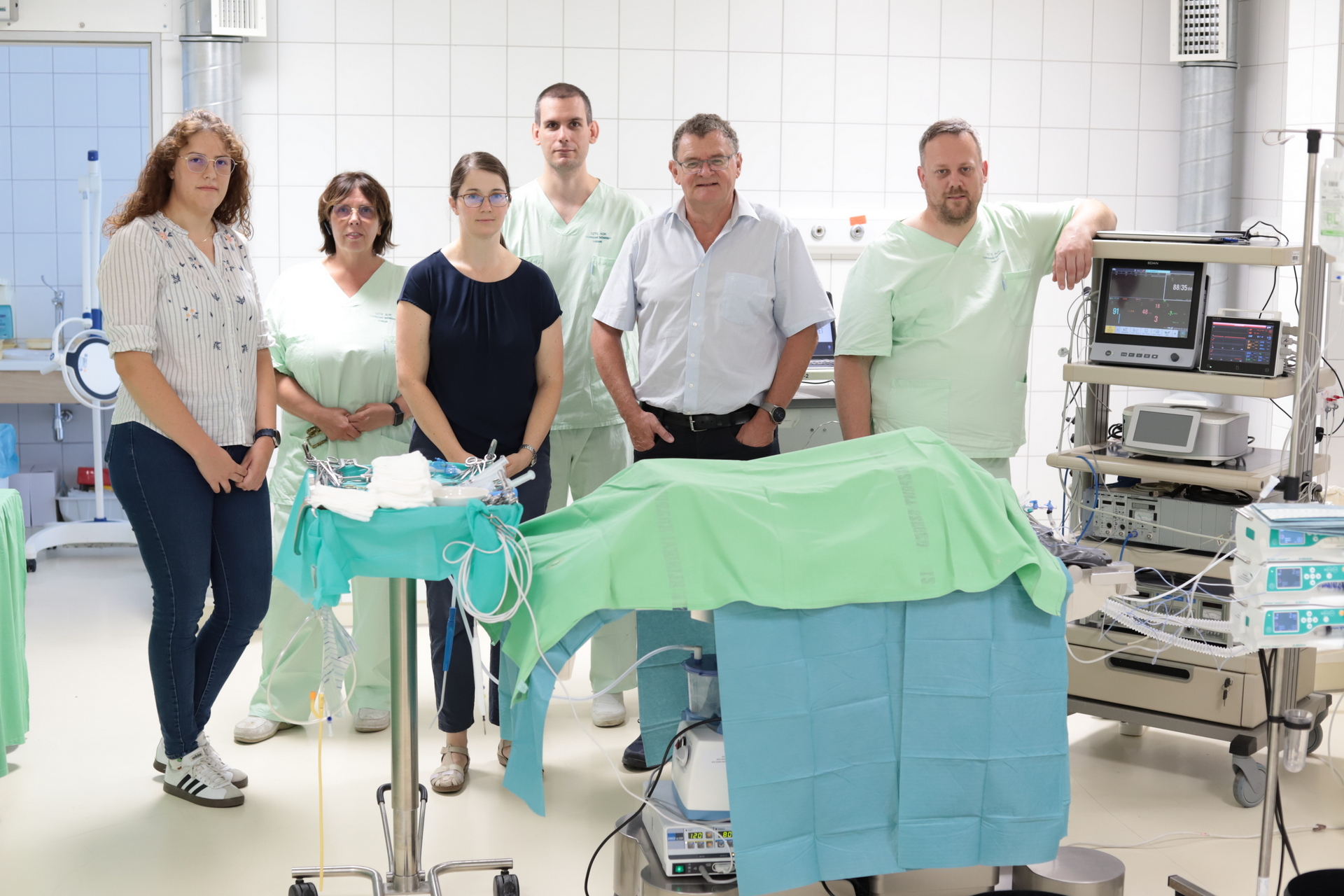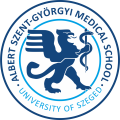University of Szeged
Albert Szent-Györgyi Medical School
Foreign Students' Secretariat
Your Education. Our Mission.

In a New Light: How SZTE Researchers Are Redefining What We Know About Methane
More than twenty-five years ago, a research initiative on methane was launched in Szeged, opening entirely new perspectives on how inflammatory processes can be treated. Today, methane – once dismissed as an inert atmospheric bystander – is emerging as a surprising ally in the fight against inflammation. Building on this long-running work, Professor Dr. Mihály Boros and his team are now exploring methane’s biological effects in research that may reshape how we understand and treat inflammatory diseases. We spoke with Professor Boros about the discoveries emerging from their project, supported by HU-rizon, an international research-excellence program funded by Hungary’s National Research, Development and Innovation Office (NRDI Office).
“The main objective of the HU-rizon project is to design and develop a new medical device – one that represents a true technological breakthrough – along with a complementary diagnostic method,” said Professor Dr. Mihály Boros. “This innovation would allow for real-time, non-invasive monitoring of pathological changes in gastrointestinal (GI) circulation, thereby facilitating early diagnosis and enabling the timely initiation of precisely targeted therapy.”
As Professor Boros – Head of the Institute of Surgical Research at the University of Szeged and researcher at the Interdisciplinary Center of Excellence for Research, Development, and Innovation – emphasized, studies on the unique properties of methane have been ongoing in Szeged for more than 25 years. While the research itself is relatively recent in scientific terms, the molecule at its center is anything but new. Methane is an ’ancient’ molecule that was present on Earth long before oxygen itself – which means that every crucial step in early cellular evolution took place in a methane-rich, oxygen-free environment. Based on this, researchers have hypothesized that methane may play a regulatory role, helping to ‘keep in check’ processes that, in the presence of oxygen, might otherwise trigger excessive oxidative reactions within cells.
Commenting on the research supported by the HU-rizon program, Professor Boros explained that inflammatory processes in the body take place in the presence of both oxygen and methane. While oxygen is known to promote inflammation, methane appears to help counteract it.
Intrigued by methane’s therapeutic potential, the researchers examined the effects of gradually increasing methane levels, up to the highest concentration still considered completely safe. What they found was that, in experimental models where inflammation could be precisely monitored, the addition of methane consistently produced a marked reduction in inflammatory activity. This finding may prove especially significant for recovery in conditions such as sepsis or sterile inflammation, which frequently arise after organ transplantation.
As part of the HU-rizon program, researchers at the University of Szeged are collaborating with several renowned partner institutions. Among them is a research group at Heidelberg University, led by Frank Keppler. Approaching the topic from a different yet complementary angle, the German team has uncovered surprising new insights. Their work revealed that methane is generated not only by bacteria or through inorganic processes such as volcanic activity, but also within humans, animals, and even plants. They published their findings on the free radical-driven formation of methane in Nature and other high-impact scientific journals. This discovery – that all living organisms produce methane – has significantly reshaped the scientific landscape of the field.
The realization that methane is produced not only by microbes and geological activity, but also by humans, animals, and plants inevitably raised a critical question: how much of it is actually generated – and how can it be measured with precision? The answer emerged through the work of Professor Zoltán Bozóki and his team, who developed a photoacoustic laser diode system capable of detecting even trace amounts of methane under biological conditions. |
| Breakthroughs in Methane Research at SZTE – Photo Gallery |
As research into methane’s physiological and diagnostic roles continues to advance, scientists are also working to develop a dedicated system for measuring the biological production of methane. Such a system would make it possible to precisely determine both the dynamics of the process and its point of origin. In parallel, they aim to clarify how the presence of nitrogen gas relates to that of methane and carbon dioxide.
This line of research fits into a broader scientific context. In recent decades, scientists have discovered that many gases once considered mere byproducts or biologically inert actually serve important physiological functions. Nitric oxide, carbon monoxide, and hydrogen sulfide are prime examples – once dismissed as waste gases, they are now recognized as key regulatory molecules in the human body.
The international collaboration supported by the HU-rizon program also extends to the Ludwig Boltzmann Institute in Vienna. A professor from the institute joined the Szeged-based effort through diagnostic studies on nitrogen compounds, with a particular focus on disorders affecting gastrointestinal circulation. A common issue in such conditions is reduced intestinal blood flow when overall circulation in the body is compromised – for example, during inflammation. This can lead to increased intestinal permeability, allowing gut bacteria to enter other parts of the body and trigger further inflammatory responses. As a result, protecting the mucous membrane becomes a central priority in both diagnosis and treatment.
This area of research presents significant challenges, particularly due to the lack of bedside methods for monitoring intestinal circulation. To address this gap, the HU-rizon team developed a specialized device capable of continuously measuring changes in methane, carbon dioxide, and nitric oxide in the presence of conditions that may affect circulation in the intestinal mucosal lining. This photoacoustic spectrophotometric system is currently undergoing testing in pigs, where it enables real-time assessment in a living organism. The method could prove especially valuable for evaluating how existing or experimental drugs influence gastrointestinal circulation – including their potential side effects. If successful, the findings may not only deepen scientific understanding but also support the development of new therapeutic agents, offering both clinical and commercial opportunities for the research groups involved.
Original Hungarian article and photos by Anna Bobkó

















